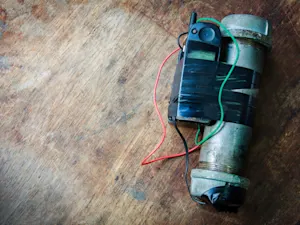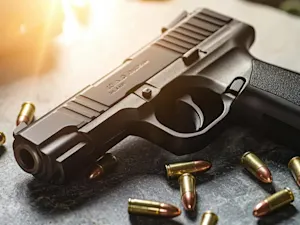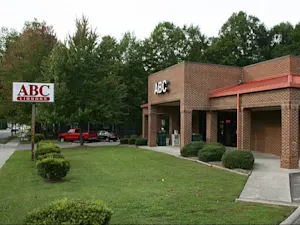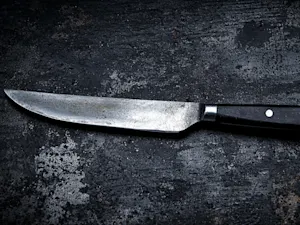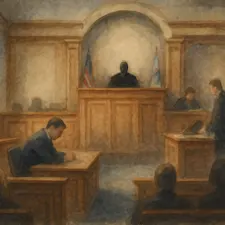
The 1954 Murder Case That Gripped the Nation
The Sam Sheppard murder case truly gripped the nation back in 1954 - think of it as the O.J. Simpson case of the 1950s. It had all the elements of a classic whodunit: the brutal murder of a pregnant woman, a well-known doctor who insisted he was innocent, a mysterious "bushy haired" intruder and a media frenzy that turned the whole thing into a circus.
If this all sounds familiar, that's because this story became the basis for the popular 1950s TV show "The Fugitive" and the subsequent movie starring Harrison Ford.
But what really happened that night, and how did it all go so wrong? Let's go back in time to that fateful night.
What Happened the Night of the Murder?
On the night of July 4, 1954, a shocking crime shattered the quiet in Bay Village, Ohio. Marilyn Sheppard, four months pregnant, lay bludgeoned to death in her bed. Her husband, Dr. Sam Sheppard, later told police he woke to the sound of her screams. He told a story of dashing upstairs, heart pounding, only to find a terrifying scene. Sam claimed he struggled with a "bushy-haired" intruder, but the man knocked him out cold. When Sam came to, his wife was dead, and the killer had slipped away.
But when the police arrived, things didn't add up. They saw no signs of forced entry, and the crime scene was a mess - mostly because a crowd of neighbors, police and even reporters had trampled through it before any real investigation could start.
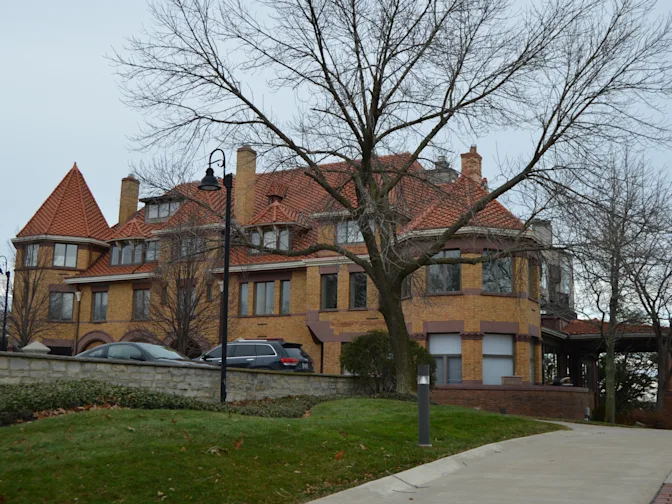 Bay View Hospital in Cleveland, Ohio, where Sheppard set up his medical practice. Photo by Nyttend. Public domain.
Bay View Hospital in Cleveland, Ohio, where Sheppard set up his medical practice. Photo by Nyttend. Public domain.
How Did the Media Influence the Case?
The media didn't just report on the Sam Sheppard case - they practically dictated the investigation. The Cleveland Press was particularly relentless, running a series of front-page headlines that stoked public outrage and demanded action.
On July 21, 1954, they ran an editorial titled, "Why No Inquest? Do it now, Dr. Gerber." This headline directly pushed the coroner to hold an inquest into Marilyn's death.
But the Press didn't stop there. On July 30, they ran another explosive headline: "Why Isn't Sam Sheppard in Jail?" This bold accusation wasn't just a question; it was a command. The public, already whipped into a frenzy by the media, began to demand justice - whether or not it was served correctly.
That very night, under immense pressure, the police arrested Dr. Sheppard and charged him with first-degree murder. Sheppard appeared guilty before he ever set foot in a courtroom.
How Did the Prosecution Build Its Case?
The prosecution wasted no time pointing fingers at Dr. Sheppard. They argued that the lack of forced entry meant Sam was lying about the intruder. They also highlighted blood evidence found throughout the house, suggesting it pointed to Sam as the killer. And then there was the affair - yes, Dr. Sheppard had been seeing a young lab technician named Susan Hayes. The prosecution argued this gave him a motive to get rid of his wife.
They also cast doubt on Sam's injuries. While he claimed to have been knocked out twice during the struggle, the prosecution argued his injuries were too minor to match his story.
And let's not forget the weapon - or lack thereof. The prosecution suggested that the murder weapon might have been a surgical instrument, which Sam, as a doctor, would have had easy access to.
How Did the Defense Fight Back?
Sam's defense team had their hands full, but they didn't back down. They stuck to the story of the "bushy-haired" intruder, calling witnesses who claimed to have seen such a person near the Sheppard home that morning. They also argued that the blood evidence was misinterpreted, and that the crime scene had been so contaminated by all the people who walked through it that it was nearly impossible to get accurate readings.
The defense also tried to paint Sam as a victim, not just of the intruder but of a rushed and flawed investigation. They pointed out that the police zeroed in on Sam too quickly and didn't bother looking for other suspects. They even argued that if Sam had committed the crime, with his medical expertise, he would have done it more cleanly and left less evidence behind.
How Did Susan Hayes' Testimony Affect the Trial?
Susan Hayes' testimony was the prosecution's ace in the hole. She took the stand and confirmed that she and Dr. Sheppard had been more than just friends. This revelation was a big blow to the defense. It not only damaged Sam's credibility but also gave the jury a possible motive for why he might want his wife out of the picture.
The prosecution painted Sam as an unfaithful husband who wanted to get rid of his wife to be with his lover. Even though the defense argued that having an affair doesn't make someone a murderer, the damage was done. Susan Hayes' testimony cast a long shadow over the trial, making it that much harder for the jury to see Sam as innocent.
What Was the Verdict?
The trial turned into a media circus, with reporters and cameras everywhere. Despite the defense's efforts, the jury found Sam Sheppard guilty of second-degree murder on Dec. 21, 1954, and he was sentenced to life in prison.
But Was Sheppard Actually Guilty?
But the story didn't end there. In 1966, the U.S. Supreme Court overturned Sheppard's conviction, saying the original trial was so chaotic that Sam didn't get a fair shot. He was retried later that year and found not guilty. The case became a landmark for how media coverage can affect a trial and a lesson in the importance of a fair and unbiased jury.
How Did DNA Evidence Finally Clear Sheppard?
Decades after Sam Sheppard's trial and acquittal (and subsequent death), new DNA evidence brought fresh proof of his innocence. In the late 1990s, scientists tested blood found at the crime scene, and the results proved eye-opening.
Samples taken from Dr. Sheppard's exhumed body showed that the blood at the scene didn't belong to him. This supported Sheppard's claim that a "bushy-haired" intruder committed the murder.
The DNA pointed to Richard Eberling, a former window washer who had worked at the Sheppard home and was later convicted of another murder. Even though this evidence came too late to save Sheppard's life and career, it finally cleared his name and revealed the truth behind one of America's most famous wrongful convictions.
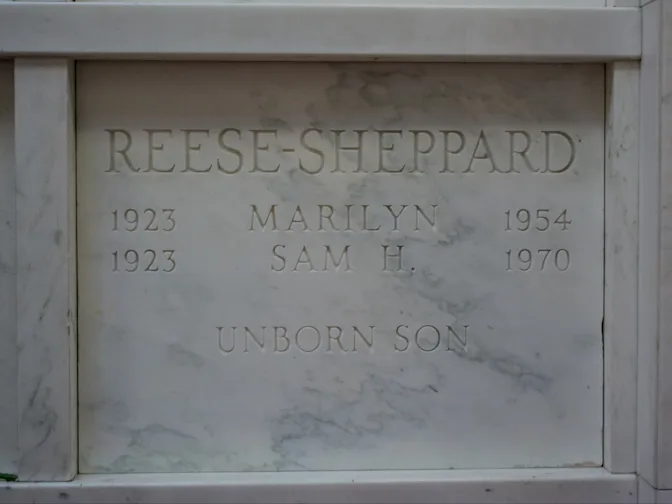 The crypt of Sam and Marilyn Sheppard at Knollwood Cemetery, Mayfield Heights, Ohio. Photo courtesy of Tim Evanson under CC BY-SA 2.0.
The crypt of Sam and Marilyn Sheppard at Knollwood Cemetery, Mayfield Heights, Ohio. Photo courtesy of Tim Evanson under CC BY-SA 2.0.
What Can We Learn From This Tragic Story?
The Sam Sheppard case is a cautionary tale about the dangers of media influence and the importance of a fair trial. While Dr. Sheppard was eventually cleared, the case left deep scars and raised important questions about justice in the court of public opinion. It's a reminder that in the pursuit of justice, the truth must always come first - no matter how sensational the story might be.
References: The Sam Sheppard Case Timeline: 1954-2002 | The Trials of Dr. Sam Sheppard: A Chronology | DNA Test Absolves Sam Sheppard of Murder, Lawyer Says | Sam Sheppard








